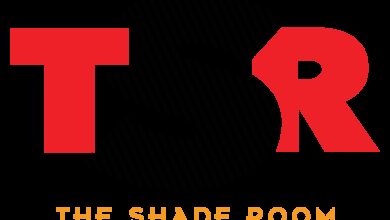Expand Your Range on Guitar with this Picking-Hand Fretting Technique

Many fingerstyle guitarists are familiar with the two-handed tapping technique used by such players as Michael Hedges, Preston Reed, Stanley Jordan, and others. Hedges pioneered the technique as a solo guitar compositional tool capable of creating counterpoint, ostinatos, and the illusion of more than one player.
Tal Farlow and other guitarists have used a similar technique, picking-hand fretting, which enables you to greatly expand your palette of chord voicings. It can facilitate piano-like spread voicings, chord clusters, and four-way close voicings that are normally impossible to play on the guitar without using a capo or alternate tuning. The timbre of picking-hand fretting is virtually the same as that of conventional fretting; the two parts sound as one, as opposed to the contrast in textures created by two-handed tapping. Picking-hand fretting is much smoother than tapping, which can be disruptive because the articulation is so heavy.
Spread Voicings
To fret notes with your picking hand, use your index and/or middle fingers just as you would with your other hand then pluck or strum the strings with your picking-hand thumb and/or pinky. You may want to experiment with the angle of your picking hand when playing through these examples. Try pointing your index finger almost parallel to the fretboard. Your picking hand will look like it does when playing artificial harmonics. Also note that this technique is very difficult if you have long fingernails, but players with short to medium-length nails should have no problem fretting after experimenting with hand placement.
In this lesson’s tablature, there’s a rectangular box around each note that is meant to be fretted with your picking hand. For instance, in Example 1, finger a common Cmaj7 voicing while your picking-hand index finger stops the tenth-fret D. Strum the strings with your picking-hand thumb while holding down your index finger. The result is a Cmaj9 spread voicing—that containing notes with a range of more than one octave. Examples 2 and 3 show a couple more spread chords that can only be played with this technique. By using the picking-hand fretting technique, you can now get a range and spread of voicings that is comparable to that available to a pianist.

Clusters and Four-Way Close Voicings
Four-way close is an arranging term used to define the voicing of a four-part seventh chord within the range of on octave, with no more than a third interval between any voice. Example 4 illustrates the four-way close inversions (root position and first through third inversions) of a Cmaj7 chord, and Examples 5 and 6 do the same with Cm7 and C7 chords. In addition to strumming the voicings with your thumb, try arpeggiating the chords using your thumb and pinky, as in Example 7.

Another wonderful color you can create is a cluster voicing, in which some notes are voiced a half step or whole step apart. These are very easy to play on piano, as the notes are basically in a straight line, but can be difficult on guitar. Example 8 shows some simple triads dressed up with upper extensions of the chord played in close intervals with picking-hand fretting. For example, in the Dm9 chord, the root (D), third (F), and fifth (A) are formed with the fretting hand using a common minor voicing, while the picking hand’s middle finger adds the seventh (C) and the index finger frets the ninth (E).

Example 9 depicts some scale-type cluster voicings that create an effect similar to artificial harp-style harmonics. In fact, the technique of picking-hand fretting/arpeggiating is similar to that for playing artificial harmonics. The biggest difference is that your index finger must stay on the fretboard while you pluck the strings with the other fingers. You can also use common fretting-hand articulations—such as slides, hammer-ons, and pull-offs—with the picking hand.
Now let’s look at two short pieces that use the picking-hand fretting technique. “Market Street Blues” is a 12-bar blues (plus an additional measure) in G major based on some standard 13th, ninth, and sharp-nine voicings, with alterations added through picking-hand fretting. Throughout this piece, use that hand’s thumb and pinky to pluck the double-stop in the second half of each measure. These dyads consist of one note fretted conventionally and another with the picking-hand index finger.
In the second and third beats of bar 4, the two hands slide in opposite directions, creating a cluster voicing and the effect of contrary motion. When fretting the D string with your index finger be sure not to mute the A or G strings while your fretting hand is holding down notes on these strings. This may take a little practice; you’ll probably need to experiment with picking hand placement a bit.

“Early Morning” is a very slow fingerstyle piece in A major that is intended to flow and open up using sustained notes. Allow each note to ring throughout the entire measure. Pluck the low E through B strings with your picking-hand thumb and the high E string with your pinky or ring finger, whichever is more comfortable.
In the first measure, fret the sixth-string G with your second finger, the second-string E with your fourth finger, and 11th-fret F with your picking-hand index finger. All these notes will be held going into the second measure. The fretting-hand third finger will play the D on the first beat of the second measure. (Alternatively, you could use the open D string, but it’s hard not to disrupt the ringing G and B strings.)
The notes on beats 2 and 3 of the second measure should be articulated using pull-offs, alternating from one hand to another. After the low D in measure 2, pluck the open E string with your picking-hand pinky and then pick the F# fretted by your picking-hand index finger on the 11th fret (held from the previous measure) with that hand’s thumb. Follow this with another picking-hand thumb pluck of the second-string D. Fret the sixth-fret C with your fretting hand’s fourth finger, and then pull off with your picking-hand index finger from the 11th fret to the sixth. The last note of the second measure is an open B string, which is played by a conventional pull-off with your first finger.

There is a whole world of voicings waiting to be discovered by using the picking-hand fretting technique. Keep track of your favorite voicings as you discover them, so you can use them in your compositions or arrangements. These voicings—particularly those that are spread—will greatly expand the variety of harmonic colors available to both the solo and ensemble player.



